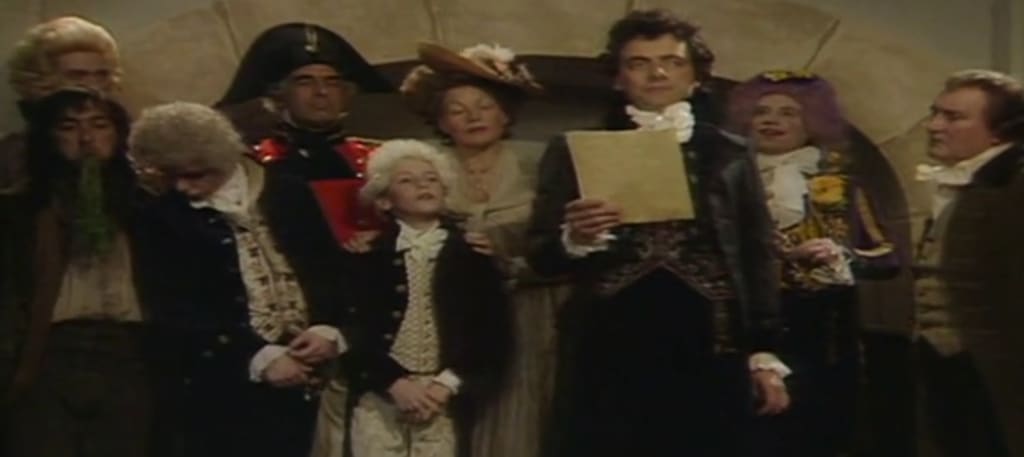The Corrupt Conception of the UK Conservative Party - Robert Peel the Prime Minister of Rotten Boroughs
How the Conservative Party was created undemocratically

Robert Peel made history on more than one occasion. He was a British politician who served two terms as Home Secretary, and twice as Prime Minister of the United Kingdom during the first half of the 19th Century. He wasn’t only the man who created the Metropolitan Police Force, but he is also considered to be the founder of the modern Conservative Party.
The first version of his Conservative Party was not democratically elected. In November 1834, King William IV removed the Whig Party Prime Minister Lord Melbourne, and asked the Duke of Wellington to form a new administration. Wellington was not interested in becoming Prime Minister, and recommended to the King that he should choose Robert Peel to become PM instead. Melbourne would be the last Prime Minister to be dismissed by a monarch, and only six months later he would be re-appointed and would serve a six year term.
Robert Peel had been first elected to parliament by a standard route for the young aristocrats of the day, which we would see now as a form of cheating. Before parliament was reformed there were some very easy ways for the affluent to become representatives in the House of Commons. Rotten boroughs were parliamentary constituencies, which consisted of an extremely small population, and sometimes they had no electorate at all. At the young age of 21, in 1809, Robert Peel was elected as MP for the Irish rotten borough of Cashel, Tipperary. The Cashel constituency had just 24 electors on the rolls and Peel won his first seat in parliament, with no one running against him.
By the time he was asked to become Prime Minister, 25 years after first becoming a parliamentarian, he was in his mid-50s and the sitting Member of Parliament for Tamworth. On 18 December 1834, after being asked to form a government with a new party that could challenge the dominance of the Whigs, Peel released the Tamworth Manifesto. The Tamworth Manifesto was an attempt to convince the small numbers of people in the UK who were actually allowed a vote that there were significant differences between the old-Tory Party and Peel’s new Conservative Party. Tamworth saw no contest in the following elections of January 1835; Peel and his brother were the only candidates to stand, and they were returned to parliament unopposed.
In his manifesto, Peel argued the issues of the day, including stating publicly that the Reform Act of 1832 was "a final and irrevocable settlement of a great constitutional question." He promised that the Conservatives would undertake a "careful review of institutions, civil and ecclesiastical". And he gave his opinion that there was a good case for real change, "the correction of proved abuses and the redress of real grievances." He also promised that he would review the question of church reform in order to preserve the "true interests of the established religion."
Peel's basic message was that the Conservatives would have to reform to survive. However, he opposed what he described as unnecessary change, fearing "a perpetual vortex of agitation."
But the underlying theme within the Tamworth Manifesto has been followed by the Tories for nearly 200 years. The modern Conservative Party can still be described as a political entity whose members oppose what they consider to be "unnecessary change."
When Peel first came to power as leader, the Whigs formed a political pact with Daniel O'Connell's members of the Irish Radical’s to repeatedly defeat Peel’s minority Conservative government on a number of bills. After only about 100 days in government, Peel's administration would resign out of frustration, and the Whigs, under Lord Melbourne, were returned to office.
The Conservative Party had been born out of desperation. It was a hodgepodge of politicians who began to disagree almost as soon as the party had been created. If we examine what they have become in the present day, the Conservative Party is not much different from its original conception. They are, more often than not, people from affluent and privileged backgrounds who desire to slow the pace of change.
If we recount the achievements of Tory leaders over the past 50 years it is clear that the Conservative Party is filled with politicians who fail at everything they do. Theresa May has completely failed in delivering Brexit, she had an awful record as the Home Secretary and has been regularly described as the worst Prime Minister in all British history. David Cameron left a country suffering from his administration's cruel austerity policies, he led us into a divisive EU referendum, and is mainly remembered as the PM who put his penis in a dead pig's mouth.
John Major oversaw a massive financial crisis, which was created by over a decade of failed Tory policies and tried to blame the single mothers of the UK for everything. Margaret Thatcher had denied the existence of society in general and crippled the United Kingdom’s industrial heartlands. Her legacy is one of child abuse cover ups, poll tax riots, allowing the banks to crash the economy, and taking milk away from school children. Ted Heath is better remembered now as a peadophile who will never be brought to justice, and was the Tory leader who laid the ground in the early 1970s for another economic crisis that would be left to a Wilson government to attempt to fix. Heath also imposed direct rule over Northern Ireland, which would lead to some of the darkest days in modern British history.
So why do people still vote for a party founded in corruption, and which has never attempted to climb out of the ethical gutters? A party that has fought to enact harmful policies, who have targeted the most vulnerable in our society, and who continue to act in a truly Dickenzian fashion. That I cannot honestly answer. But I will confidently posit that it’s because Conservative voters are more likely to be risk averse. The idea of not changing is much more attractive to their voters than a programme of reform and modernisation. UK conservatism is not about the future, it is all about the past and that’s where it should probably remain.
About the Creator
Johnny Vedmore
Go to https://NEWSPASTE.com & support Johnny
Become a Patron https://www.patreon.com/JohnnyVedmore
Or https://www.buymeacoffee.com/johnnyvedmore
Or https://newspaste.com/home/support-newspaste
NEWSPASTE Podcast: https://newspaste.podbean.com/






Comments
There are no comments for this story
Be the first to respond and start the conversation.